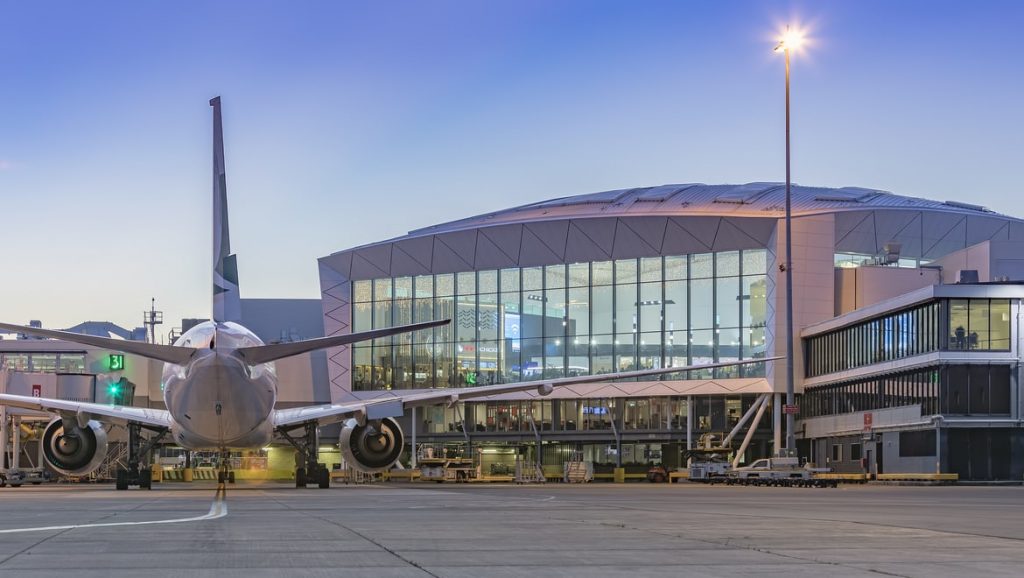
Sydney Airport’s domestic passenger traffic has fallen over 97 per cent in the two months between June and August 2021, after half the country was plunged into ongoing lockdowns.
According to the airport, overall domestic passenger traffic fell to just 25,000 travellers in August 2021, down 72.5 per cent from August 2020, and 98.6 per cent from pre-COVID levels.
Notably, the results reveal a 72.5 per cent decrease in passenger traffic from August 2020, in which over 91,000 passengers passed through the airport, as the country enjoyed a period of eased domestic travel restrictions.
The number has also fallen dramatically – 97.2 per cent – from the 906,000 passengers it saw in June 2021, again before much of the country closed its borders to Sydney due to its COVID-19 outbreak.
Meanwhile, the airport’s international passenger thoroughfare fell to 26,000 in August 2021, down 35.6 per cent from 2020, and 98.6 per cent from August 2019.
The airport, usually Australia’s busiest, stated that both international and domestic passenger traffic was heavily impacted in August by the current lockdown in NSW, combined with ongoing international and state border restrictions.
It comes as Brisbane surprisingly took home the gold medal for the country’s busiest airport throughout the pandemic, surpassing rivals Sydney and Melbourne.
In the 12 months to 30 June 2021, Brisbane saw 7.31 million domestic passenger movements, according to a new report by the Bureau of Infrastructure and Transport Research Economics (BITRE).
Despite reporting its lowest passenger figures since 1994, the numbers placed Brisbane Airport slightly ahead of Sydney’s 7.26 million passengers, and Melbourne’s 5.89 million.
In the previous year, the Queensland capital came in third place, with 13.10 million domestic passenger movements, behind Melbourne with 18.98 million passengers and Sydney with 20.10 million passengers.
The feat was likely achieved as Queensland was able to avoid major COVID-19 outbreaks, while both Sydney and Melbourne faced extended periods of border closures due to the virus.
“We would say we’re pleased but not proud of this result,” said Brisbane Airport executive general manager aviation Jim Parashos. “We’d much rather see our industry operating back under normal circumstances.”
However, Parashos added that the result “demonstrated just how well connected Brisbane is in the intrastate market”, adding that nine of the 16 sectors featured in the BITRE report were services run within Queensland.
“Services to Hamilton Island and Proserpine were almost double what they were in the previous year, so it shows how the market shifted amid domestic border closures.”
The news also comes following numerous suggestions that airports, and Australia’s aviation industry more generally, are not yet prepared to see the influx of international passenger traffic, should international borders reopen by the end of this year.
Last week, the Australian Airports Association CEO James Goodwin told Australian Aviation that while airports have comfortably adapted to cater to current overseas repatriation efforts, the industry remains in the dark about some key requirements for a mass return of international flights.
“At the moment, we still don’t know what procedures will be for passengers coming in from overseas, and what is needed of airports, airlines, staff and government agencies to facilitate that,” Goodwin said.
“There are long lead times in aviation, so six or 12 months is not actually a long time in our world. So a lot of this planning could have and should have been done a long time ago.”
He added, “Airports weren’t designed to be separating passengers based on their health or their vaccine status, so we need to prepare.”
It also follows calls for aviation wage subsidies to be extended to include airport operational workers.
Avalon Airport chief executive Justin Giddings told Australian Aviation that while airports have already adapted to COVID-safe infrastructure, “staffing is going to be an issue moving forward”.
He said that while airports have kept their doors largely open throughout the pandemic, traffic has fallen dramatically, and airports weren’t offered the same additional wage subsidies offered to airlines.
“We can have staff on hand, trained, and ready to go, but we need the resources, so we’re hoping the government will expand those programs to include operational airport workers as well as baggage handlers working for third parties,” Giddings said.
Meanwhile, Parashos said that both the state and federal governments should be making such decisions in close consultation with the industry.
“Guidance, teamwork and collaboration are absolutely key here, and I urge both the state and federal governments to work with airports and airlines to make sure we’re active participants in this crucial decision-making,” Parashos said.
“We know that the process for incoming passengers is going to look different whether you’re from a ‘green’ COVID-safe country, or an amber or a red country, and it’s really important that airports and airlines are involved in those decisions and understand them.”
Goodwin agreed, stating, “We’re here to help facilitate this process, we want to reopen Australia, but there’s a lot involved with this and we don’t want to get it wrong.
“The planning needs to be done right the first time, every airport is a little bit different, and we need to develop a uniform approach to pre and post-flight processing, as well as quarantine arrangements, and this is why it’s important that decisions are made in consultation with us.”















